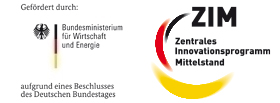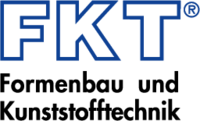Sika Werke GmbH and FKT Formenbau und Kunststofftechnik GmbH
EMC functionality: implementation directly in the injection molding process
Process-based functional integration in injection molding - Intelligent hybrid structures for topology- and requirement-oriented shielding of foamed plastic housings.
The challenge for industry
In Germany, manufacturers of electrotechnical equipment are required by law to minimize the radiation of electrical equipment to other equipment by using shielding enclosures. Both the traditional use of "weighty" metal housings and the subsequent painting of injection-molded plastic housings, which involves high costs for postprocessing and logistics, are not a solution in the medium and long term in terms of resource efficiency.

Function integration in the process
The aim of the "EMV+Light" research project is to develop intelligent hybrid structures for topology- and requirement-oriented shielding of foamed plastic housings produced directly by injection molding. The housings, which are combined with a conductive seal, are to have an average shielding effectiveness of at least 40 dB in the frequency range from 30 MHz to 6 GHz when in use. The required functionality is linked to the demand for products that are as light as possible, manufactured by chemical foaming, with maximum possible design freedom (3D) for the component developer. The applicability, cost-effectiveness and efficiency of the developments are to be examined as examples.
Achieving the goal with bundled expertise
The implementation of EMC functionality directly in the injection molding process requires close interaction between component design, material, mold development and process control. In cooperation with Sika Werke GmbH (Sika) as a manufacturer of film systems and FKT Formenbau und Kunststofftechnik GmbH (FKT) as a mold expert, we have succeeded in identifying attractive alternatives to conventional EMC implementation.
The milestones
The development of the tool and process engineering solution concepts for series production is based on the material systems that guarantee the EMC function in combination with thermoplastic materials. The focus here is on application-dependent composite films, the core of which consists of aluminum foil. Conductive additives are also taken into consideration.
The multi-layer film systems investigated consist of up to seven layers and have layer thicknesses of 6 to 100 µm, depending on the structure. Due to the excellent bond strength between the layers in combination with a stretchability of over 45%, the films withstand the stresses of the injection molding process and compensate for the difference in shrinkage compared to the plastic.
While Sika has the know-how in the development and production of the shielding film systems, FKT and KUZ were involved in tool development and construction, in the cutting optimization of the film systems and in the realization of the injection molding processes including the handling of the film blanks. In the course of the project, three manufacturing concepts based on monostructures and two manufacturing concepts based on hybrid structures are being investigated and evaluated in terms of their suitability for practical use. While either film systems or conductive particles are used for shielding in the monostructures, a combination of film systems with conductive particles is used for shielding in the hybrid structures. A systematically tested and optimized cutting design using lasers creates freedom in the housing design without compromising the EMC shielding. The technical tooling challenges lie in the positioning and fixing of the flat, flexible blanks, which must be solved using special techniques such as IMD or IML.
A prototype housing made of PP and PA6 is used to demonstrate that topology- and requirement-compliant shielding can be implemented in the housing manufacturing process, which is suitable for both the 1K and 2K processes and is economically very attractive.
EMC functionality with plus points
For manufacturers of electrotechnical devices, the solutions developed offer alternatives to current methods with excellent shielding effectiveness and an average shielding attenuation of more than 40 dB in the frequency range from 30 MHz to 6 GHz.
There is a high degree of design freedom (3D) in the molded part design with lightweight construction potential. The substitution of metal housings with plastic results in a weight advantage of at least 50 % and an additional 10 to 15 % through chemical foaming.
The EMC functionality is achieved directly in the injection molding process with attractively priced multi-layer film systems without post-processing and therefore independently of third-party suppliers. Time-consuming multiple transports and intermediate storage are no longer necessary.
Assuming series production, shielding with the aid of multi-layer film systems directly in the injection molding process is by far the most cost-effective option compared to other solutions in the cases considered.

Funded by: Federal Ministry for Economic Affairs and Energy (AiF)
FKZ: 16KN077438
In collaboration with
Sika Werke GmbH
Dr. Christoph Frenzel | c.frenzel@sika-werke.de | +49 341 91 86-247
FKT Formenbau und Kunststofftechnik GmbH
Udo Staps | Udo.Staps@fkt-triptis.de | +49 36482 87-200
Contact
Kathrin Klamt
+49 341 4941-606
klamt@kuz-leipzig.de















 "/>
"/>